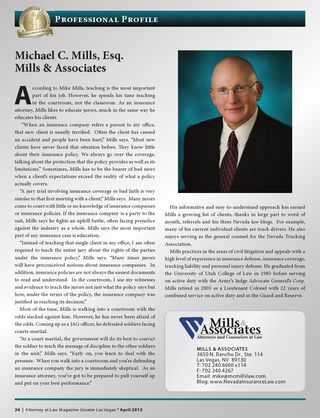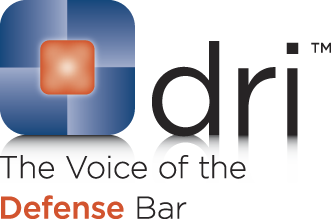Employers can be held liable for negligent acts of employees under a legal theory of vicarious liability known as respondeat superior. In simple terms, this means that if an employee, while acting within the course and scope of his employment, is negligent, the employer will be legally responsible for the damages suffered. Nevada even has a statute on the subject. It states:
N.R.S. 41.130 Liability for personal injury. Except as otherwise provided in N.R.S. 41.745, whenever any person shall suffer personal injury by wrongful act, neglect or default of another, the person causing the injury is liable to the person injured for damages; and where the person causing the injury is employed by another person or corporation responsible for his conduct, that person or corporation so responsible is liable to the person injured for damages.
However, if an employee is acting outside of the “scope of employment” the employer may not be responsible. Take for example the case of Kornton v. Conrad, Inc., 119 Nev. 123, 67 P.3d 316 (2003). In that case, the employee was an apprentice plasterer. He did not have a fixed reporting place. Instead, he would be told by a supervisor where the next day’s work would begin. While on the way to work, the employee lost control of his car and slid into the path of the injured Plaintiff. Plaintiff’s attorney wanted to hold the employer, Conrad, Inc., responsible for the accident. The court said:
Generally, the trier of fact determines “whether an employee was acting within the scope of his or her employment” when the tortious act occurred. Issues of respondeat superior liability, however, may be resolved as a matter of law when evidence of an employee’s status at the time of the incident is undisputed. “The tortious conduct of an employee in transit to or from the place of employment will not expose the employer to liability, unless there is a special errand which requires driving.” “This is known as the ‘going and coming’ rule.”
119 Nev. at 125.
The court went on to find that the employee was not in the course and scope of his employment because he was on his way to work The court explained further:
Camacho was not performing a service within the scope of his employment for Conrad at the time of the accident, but was merely commuting to a job site from home in his private vehicle. Due to the nature of his work, Camacho reported to different job sites depending on the location of Conrad’s projects. He was an hourly employee who received compensation only for actual time worked and did not receive reimbursement for travel expenses. In addition, Conrad did not exercise control over Camacho or receive a benefit by having Camacho transport a company-issued plasterer’s trowel to and from his job each workday. Keeping the trowel with him instead of leaving it at a job site was a commonsense practicality due to the transient nature of Camacho’s job location.
119 Nev. at 125-26.
Ultimately the court said that the employee was not in the course and scope of his employment and that the employer was not vicariously responsible for the injury that he had caused.
 Follow
Follow Email
Email


